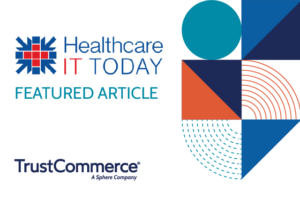If healthcare price transparency isn’t already at the top of most patients’ minds, it’s likely to be soon.
The federal Hospital Price Transparency rule, which went into effect last year, is intended to make it easier for healthcare consumers to have price transparency – to shop and compare prices across hospitals, as well as estimate the cost of care before going to the hospital. The rule requires hospitals to publicly post standard charges, available for free, and presented in a consumer-friendly format, including the rates they negotiate with insurance companies and the discounted price they are willing to accept directly from a patient if paid in cash.
In June 2022, Atlanta-based Northside Hospital became the first health system in the nation to be fined by the U.S. Centers for Medicare and Medicaid Services (CMS) for violating the hospital price transparency law. The hospital’s penalty exceeded $1 million and was issued because it failed to post a searchable list of prices for consumers.
More fines are almost certain to follow, as a recent analysis found that only 14% of hospitals surveyed were in compliance with the hospital price transparency rule. As reports of more penalties emerge, healthcare consumers are likely to experience a greater sensitivity to price transparency in healthcare as they expect more upfront pricing information from providers, regardless of whether that care is delivered in a hospital, office, or virtually.
Why Use a Healthcare Cost Estimator Tool
To help providers get ahead of consumer demand for greater price transparency, a healthcare Cost Estimator tool is essential. This tool enables practices to send cost estimates to patients pre-arrival, at point-of-service, at claim submission, and pre-surgery, based on an individual patient’s insurance benefits and eligibility. The tool takes several factors into account, including copay, expected visit type, and patient history, to estimate patients’ out-of-pocket costs prior to service being rendered.
By offering pre-service cost estimates, providers improve collections, realize revenues sooner, and free staff from contacting patients to chase down payments. The percentage of accounts that must be turned over to collection agencies decreases, enabling practices to keep more of the money they are owed.
Enhanced consumer expectations for healthcare price transparency are here. Offering pre-service healthcare cost estimates is the best way for providers to accommodate this emerging patient demand.
- Comprehensive healthcare cost estimation provider dashboard reports to help front desk staff catalog services patients receive to generate cost-of-care estimates
- Proprietary, machine learning-based engine that predicts patient out-of-pocket costs
- Adaptive fee schedule management engine
- Self-learning engine that adapts based on each claim






